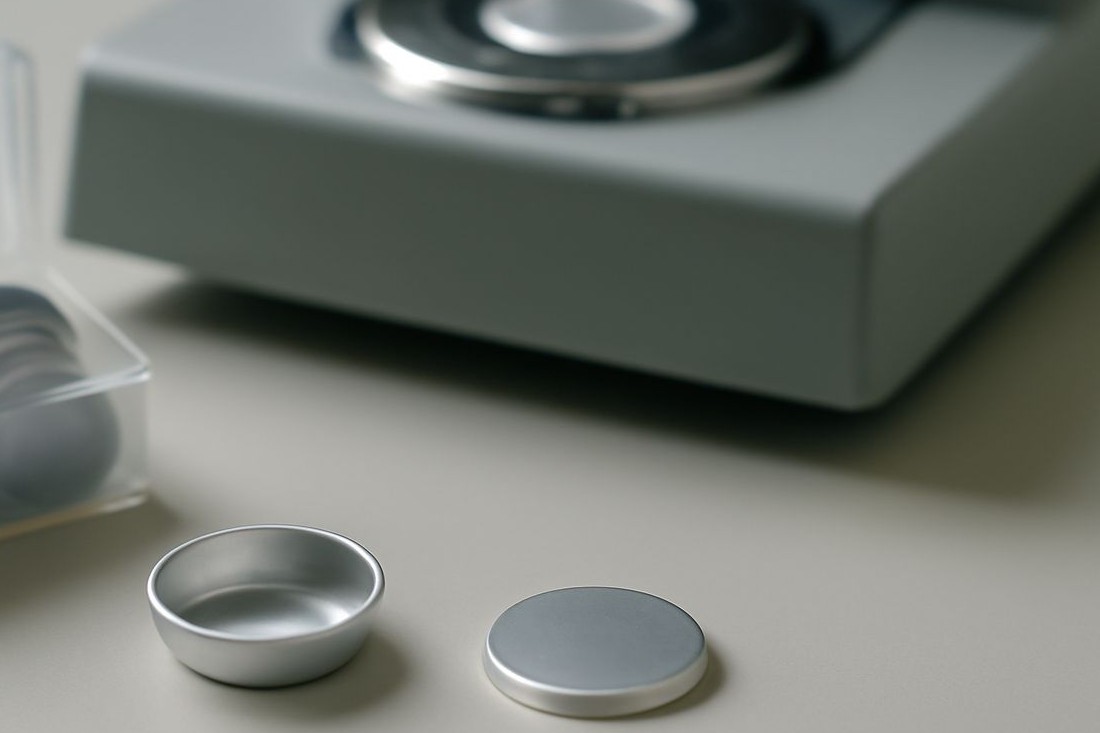Your cart is empty.
shop now
Your cart is empty.
shop now
Many labs struggle to achieve accurate thermal analysis results because they ignore small but vital details in DSC pan specifications.
The most important DSC sample pan specifications in bulk purchasing include material purity, dimensional accuracy, and temperature limits. These factors directly affect test reliability and compatibility with your DSC equipment.

Getting the right bulk DSC sample pans means focusing on the technical details that impact your lab’s productivity and test accuracy. Each point I cover below draws on hands-on experience serving clients who work with demanding thermal analysis applications. If you have ever had one failed test trace back to pan quality, you know why these specs truly matter.
Many labs get inconsistent results from DSC tests simply because of mismatched pans. The technical specs you choose can make or break your results.
The most critical DSC pan specs are pan material, purity, size, fit (tolerance), sealing method, and max working temperature. These determine accuracy, repeatability, and instrument safety.
| Specification | Description | Why It Matters | Data Source |
|---|---|---|---|
| Material | High-purity aluminum, platinum, gold, or press-seal alloys | Impacts background response and compatibility | ScienceDirect |
| Purity | 99.99%+ common for aluminum for stable baselines | Reduces contamination risk and improves signal | SAGE Journals |
| Tolerance | Dimension accuracy, usually ±0.01mm | Guarantees instrument fit, avoids leakage | Manufacturer Technical Sheets |
| Sealing | Crimped, press-sealed, or vented lids | Controls sample atmosphere during heating | Instrument Manuals |
| Temperature Range | 350°C (standard), >1600°C (platinum) | Matches pan to material’s melting point | ACS Publications |
Material, purity, dimensions, sealing, and max temperature work together. Overlooking any single factor can impact your Differential Scanning Calorimetry results. Making these specs central in your bulk order avoids wasted resources and failed tests.
If your DSC pan material does not match your sample and thermal needs, unwanted signals or errors appear in your measurements. Choosing the right material is vital.
High-purity aluminum pans work for most organic and polymer tests. Platinum pans suit high-temperature work or samples needing inert, non-reactive surfaces.
| Pan Material | Thermal Conductivity (W/m·K) | Strengths | Best Uses |
|---|---|---|---|
| Aluminum | 237 | Excellent heat flow, widely compatible | Polymers, Food, Pharma, Organics |
| Platinum | 71.6 | High melting point, corrosion resistant | Ceramics, Metal alloys, Inorganic Salts |
| Gold | 318 | Inert, high conductivity, expensive | Specialty research, high-purity work |
The material’s thermal conductivity determines how sharply your DSC registers sample transitions. For temperatures above 600°C or reactive environments, platinum or gold is the best choice despite the cost. For routine work, high-purity aluminum offers a great balance of performance and price.
Even the best pan material fails if pans do not fit, seal, or weigh consistently. Without tight tolerances, tests can fail for reasons that are hard to spot.
Tolerances keep every pan within strict size and volume limits. Precision ensures pans seal properly, fit into autosamplers, and prevent leaks.
| Parameter | Optimal Value | Impact if Out of Spec | Reason for Control |
|---|---|---|---|
| Diameter & Height | ±0.01 mm | Leaks, jamming, inconsistent results | Hardware fit to avoid instrument damage |
| Volume | ±2% | Baseline drift, sample overflow | Accurate calorimetric measurements |
| Weight | As specified by OEM | Calibration errors | Result comparison |
Reputable pan suppliers always measure and control engineering tolerance in each batch. If you buy bulk packs with mixed tolerances, some pans might fit poorly or break instrument seals. For reliable bulk ordering, trust suppliers who document tolerances and invite sample testing before shipment.
Going past a pan's max rated temperature risks sample loss, test chamber damage, and hazardous events. Matching pan type with your sample’s temperature needs keeps tests safe.
Standard aluminum pans handle 350–600°C, while platinum pans withstand up to 1600°C. The choice depends on your sample’s melt point and reactivity.
| Pan Type | Max Temp (°C) | Typical Applications | Reference |
|---|---|---|---|
| Standard Aluminum | 350–600 | Pharmaceuticals, Polymers, Food testing | PerkinElmer Reference |
| High-Pressure Aluminum | 650–800 | Reactions with volatile compounds | Supplier Data Sheets |
| Platinum | Up to 1600 | Ceramics, Metals, Inorganic research | TA Instruments |
Always choose a pan with a maximum temperature that is above your material’s highest test point. Using under-rated pans can lead to oxidation, breakdown, or sample spills that affect repeatability and instrument safety. When in doubt, consult your DSC’s product documentation or a qualified supplier for advice.